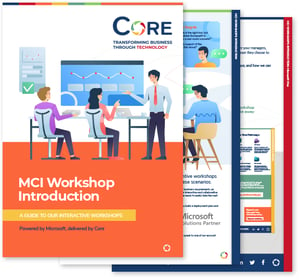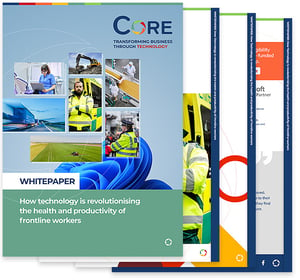In the modern workforce, most organisations aren’t short on data—they’re swimming in it. From customer interactions and operational processes to cloud platforms and workplace tools, data flows through every part of the modern business.
Yet turning that data into decisions—and value—is still a challenge for many. Despite investments in dashboards, reports, and analytics platforms, decision-makers often find themselves stuck: either overwhelmed by too much data, or underwhelmed by insights that lack context. So, how does your organisation close the gap between data collection and business action?
The shift to an insight-driven culture
It’s not just about adopting the latest BI tools or creating a central data warehouse. Building an insight-driven culture means making data literacy, accessibility, and accountability part of everyday decision-making across the organisation.
This shift is less about technology and more about mindset. It means empowering users at all levels—not just analysts or data scientists—to engage with data confidently and responsibly. And it requires rethinking how data is surfaced, shared, and acted on across functions.
What gets in the way?
For many businesses, the obstacles are familiar:
- Siloed systems that don’t communicate
- Poor data quality that erodes trust
- Over-reliance on gut feeling or legacy habits
- Analytics bottlenecks, where only a small team can access or interpret the data
- Lack of clarity on which metrics really matter
These challenges are often cultural, not technical. The good news? With the right strategy, they’re fixable.
Building Blocks of an Insight-Driven Organisation
1. Make Data Accessible
Empower non-technical users with intuitive tools like Power BI or intelligent automation solutions. The easier it is to explore, visualise and interact with data, the more likely it will influence day-to-day decisions.
2. Prioritise Data Literacy
Support your teams with training that goes beyond dashboards—teaching them how to ask the right questions, spot patterns, and challenge assumptions. This can be as simple as role-specific learning journeys or interactive workshops with your data and insights team.
3. Tie Insights to Outcomes
Data for data’s sake has limited value. Make sure your reporting is tightly linked to operational goals—whether it’s improving service response times, reducing cost per transaction, or increasing customer satisfaction.
4. Break Down Silos
Ensure your data strategy includes cross-functional collaboration. Marketing, finance, operations and IT all benefit when insights are shared, discussed, and translated into joint actions.
5. Govern Without Creating Barriers
Yes, data security and compliance are critical—but over-restricting access or burying teams in red tape can stall progress. A smart governance framework balances control with enablement.
The Microsoft Ecosystem Advantage
For many UK organisations already invested in Microsoft 365, the tools to become more insight-driven are already in place. From Power BI and Microsoft Fabric, to Dataverse and Power Platform, the ecosystem enables scalable, secure, and user-friendly analytics.
When integrated with tools like Teams and SharePoint, insights can be shared in context—at the moment decisions are being made, not just in monthly reports. That’s where the real cultural shift happens: when insights are part of the everyday workflow, not an afterthought.
Being data-rich isn’t enough. The organisations that will thrive are those that can move from data to decisions—faster, smarter, and with greater confidence. At Core, we help businesses across the UK take that step—whether that means simplifying reporting, unlocking Microsoft’s full analytics potential, or building a governance model that supports innovation and trust.
If you’re ready to make data your competitive advantage, let’s explore how to turn your information into impact.






